Ancient history is everywhere you look in the Greek capital. But nowadays, the city is also the location of cutting-edge art.
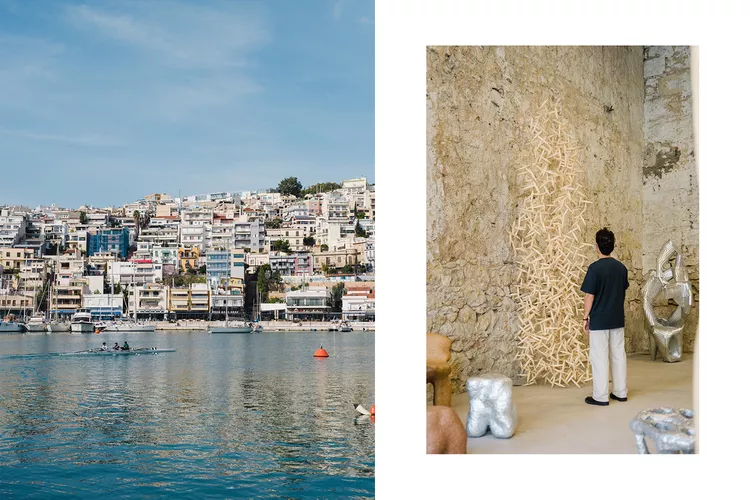
It's possible that a bystander thought it was a wedding feast. A group of rowdy Greeks were crowding around rows of long tables that were placed end to end in the Athens suburb of Metaxourgio, a historically industrial area. The aroma of roasting lamb on an open grill filled the room. However, this wasn't a wedding but the opening of an exhibition at the Breeder, a cutting-edge contemporary art gallery. It was announced by a sleek (and clean) white façade and was housed in a restored ice cream factory. An enormous iron portal opened, revealing a majestic chamber with natural curves.
The artist Andreas Lolis showed me some of his impressive works on the bottom floor. They initially appeared to be blank canvases with fine cuts, but they were actually made of marble, the most typical of all Greek building materials. Lolis referred to the British and Argentine-Italian artists as "Henry Moore and Lucio Fontana," saying, "I found inspiration from both of them." "They both pushed the limits of what was possible in their respective forms."
The Breeder is only one illustration of Athens's robust cultural landscape, which has been regenerated despite a string of catastrophes that might have broken the soul of a less tenacious city. The 2008 financial crisis resulted in a number of financial bailouts from other EU members, which were followed by austerity measures that outraged a large portion of the people. The Greek capital is still recuperating from this catastrophe. The global pandemic didn't exactly make those efforts any easier, but as the gallery's associate director Alkistis Tsampouraki explained to me, "I worked for seven years in galleries in Mayfair. Two years ago, when I returned home, I wondered, "What?" It's Athens, right? There was a sudden realization among the artists I knew in London and even New Yorkers that studios could be rented here for 300 euros per month with a life quality that is difficult to match.
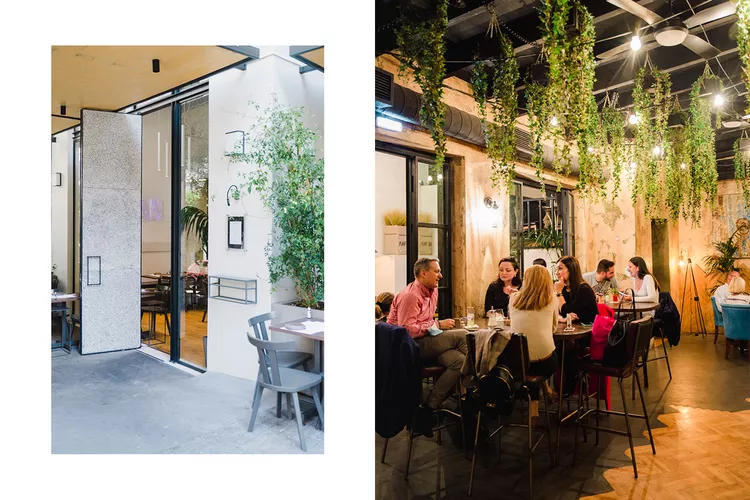
The city's popularity with bohemians and its use of abandoned urban spaces inspired the phrase "Athens is the new Berlin," which was coined by a street artist named Cacao Rocks around 2009 and seized upon internationally the following year. In fact, according to Tsampouraki, Athens' turbulent history since the crisis is the unlikely key to its revival: "Where there is chaos, there is also creativity." The forced budget cuts imposed by Germany in the EU's 2010 bailout package offended the Athenians, who saw them as cruel and unfair.
Around 2015, Cacao Rocks began writing THIS IS NOT BERLIN on walls as a means of protest. But if there is any actual parallel, Tsampouraki said, it is to New York City in the 1980s: "It was dirty and difficult, but also incredibly creative." In 2017, he further developed the notion by coining his most well-known and pointed version: ATHENS IS THE NEW ATHENS. It had an irresistible energy. Athens as it is right now.
To Tsampouraki amazement, I could relate. I spent many weeks in Athens twenty years ago to conduct research for my two books on the old Greek world, Pagan Holiday and The Naked Olympics. I enjoy an Acropolis view just as much as the next person, but I have to concur that the city is a congested, unlovable nightmare that should be avoided at all costs while traveling to the islands. However, news is spreading that Athens is bouncing back with a fervor not seen since Plato's day. I made the decision to return to the birthplace of Western culture as a pilgrimage as a result. I vowed that this time, I would ignore the abundance of historic ruins there and instead focus on what has occurred in recent years.
I took a taxi directly to the Shyla Hotel from the airport. This six-room boutique hotel is located in the Kolonaki neighborhood, a posh neighborhood of winding streets at the foot of Lycabettus Hill, and is a serene haven of art and beauty.
Like many companies that make up the new Athens vanguard, the Shila skillfully strikes a mix between traditional and modern components. My room, the Dreamers, was furnished with authentic terrazzo flooring, antiques, handcrafted items, and modern artwork. Its shop sells lovely linen clothing produced by Lefko, a Singaporean-Greek couple's company that also employs refugees and victims of human trafficking. The opportunity to attend the Social Club, an invitation-only gathering that has since been moved to the Shila's sister resort, Mona, under the name Club Mohamoud, was for me, however, the real benefit of staying at the Shila. For the creative people who have flocked to Athens—many of them returning expats like Tsampouraki—it's a hot ticket.
As a postscript: "You're keeping something in a dark and dreary gallery of the British Museum as opposed to allowing it to see the light’,” @VicHislop tells the @britishmuseum.
— Dimitrios Giannoulopoulos (@DimitriosGian) March 20, 2021
“The Acropolis Museum in Athens is so full of light”.
Pic credit: from a recent visit #Greece pic.twitter.com/ijhjwuxl2y
I ran across the Shila's creative director, artist-photographer Eftihia Stefanidi, who relocated from New York to curate the hotel's art collection, as soon as I made it to the rooftop, where the festivities were taking place. Stefanidi introduced me to the cast of regulars, including her sister Elli, a New York-based artist who visits every summer, and her friend Alexandra Mercuri, a Greek-born designer who had just returned from Paris. Alexandra then introduced me to her sister Dorota, a Greek actress and TV host who had just returned from New York, Alexia Kermit's, a fashion designer who had just returned from London, and Andreas Lagos, a nomadic chef who counsels the I felt like I had met half of Athens in one hour, had been showered with insider information about the city, and had been extended enough invites to meals and drinks to last me a month.
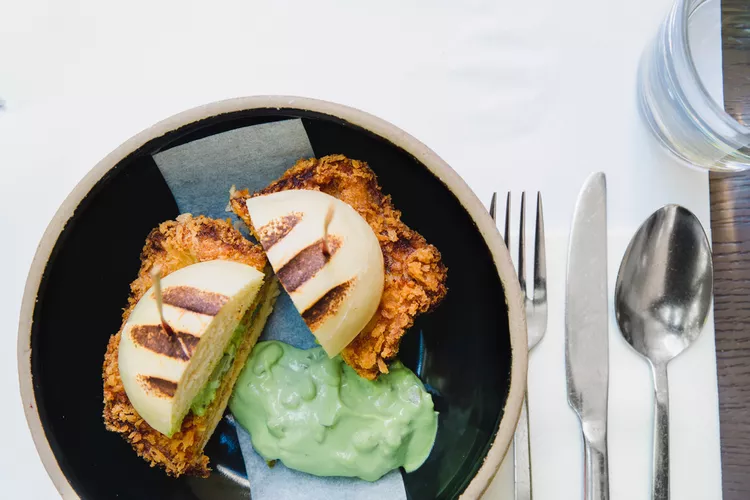
As I sipped a "Perfect Greek G and T" made with a locally crafted gin called Votanikon, which is distilled with a variety of endemic herbs, including earthy sideritis and piny mastiha, that "highlight the botanical heritage of Greece," according to Stefani, I realized that the Shila Social Club resembled a Greek version of Soho House but that nobody was about to confuse it with London or New York.
I started with lunch at Nolan, the city's first (and only) Japanese-Greek restaurant, and then I was ready to sally forth to discover the "New Athens." I had cross-cultural delicacies like bean noodles with octopus and Kalamata olives just a few steps from raucous Syntagma Square, Athens' official center with its ostentatious Parliament House and formal parks.
From there, I avoided Plaka, the bustling district in the center of Athens where the pathways to the Acropolis first appear, and instead made my way to the Clumsiest, a cocktail bar located in a charming townhouse in Psirri. For the past three years, it has been listed among the World's Top 50 Bars. It is famous for its Aegean Negroni, which combines the bar's own artisanal gin with fennel seeds and unique Greek liqueurs like Diktamo to create a vivid turquoise mixture fit for the sea it is named after.
Reluctant to call it a night, I made my way to Santarosa, an even more recent and stylish bar, located just north of the city center in Exarchal. There, chain smokers smoked cigarettes as if the EU indoor smoking ban had never been implemented, and a perfectly groomed papillon puppy ran along the wooden bar beneath abstract paintings. The bar has become a favorite among the underworld due to its disregard for the law. How were you informed of it?Athenians later questioned me inquisitively, as if I could reveal their secret.
Related link : Rio de Janeiro is home to 19 attractions that consistently earn high marks from visitors.
Other formerly abandoned working-class neighborhoods are likewise gentrifying quickly. The term Metaxourgio, which means "silk mill" and refers to the area's former industrial history, brought me back there after several detours. Aristocrats constructed opulent residences there in the 1830s and made investments in a massive shopping mall, which was eventually converted into a silk mill after the king of Greece changed his mind about moving his castle there. Last century, the neighborhood began to deteriorate, but in recent years, it has recovered.
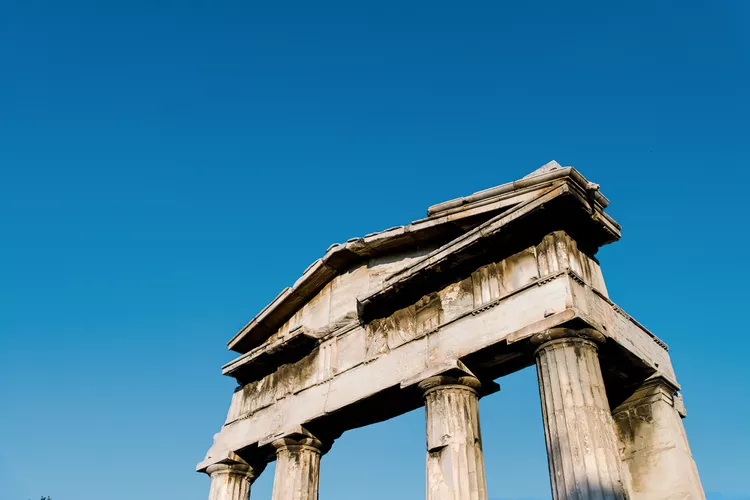
A street artist named Rude led me through Metaxourgio one afternoon and said, "It's my favorite neighborhood. The area definitely supports the imaginative use of heritage space. The interior of one partially demolished, roofless home was converted into a courtyard where Galiántra, a food truck offering up modern comfort food such meatballs with creamy tsalafouti cheese, soy-mince stew with cucumber and onions, and tomato and watermelon salad, could be found. Since food trucks aren't permitted on Athens' streets, a group of cooks rented an entire house and set up shop inside, according to Rude. The neighboring Latraac, a café with its own skateboard bowl, is equally odd.
Rude wanted to show me the city's most controversial street art. Since the 2008 financial crisis, artists with the names Ino, Achilles, Exit, Waxhead, Same84, and Simple G have transformed the entirety of Athens into an outdoor gallery, with colossal murals covering entire building facades or billboard-sized stretches of walls next to major roads. It turns out that Rude's real name is Nikos Tonga's. He shook his head and said, "I opened up a dictionary and there it was," when I questioned how he chose the handle. His favorite images he discovered throughout the city included a black-and-white painting of the Mona Lisa's eyes, placed above a busy freeway. I liked it since it is only four letters and so easy to write. "Do you notice how her pupils are reflecting?" Did he ask. One showed a police officer wielding a baton, while the other showed a suspicious-looking individual in a suit. "The two main issues facing Greece are corrupt politicians and police brutality."
According to rumors, Athens' contemporary art industry got its beginnings when it co-hosted Document with Kassel, Germany, the exhibition's traditional home, in 2017. These days, there are so many cultural spaces in Athens that it's impossible to see them all — at least in one visit. Artists began arriving in droves, while new galleries and museums sprouted in such numbers that in September 2020, the Financial Times hailed Athens as Europe's hot spot under the headline AN ART CAPITAL RISES.
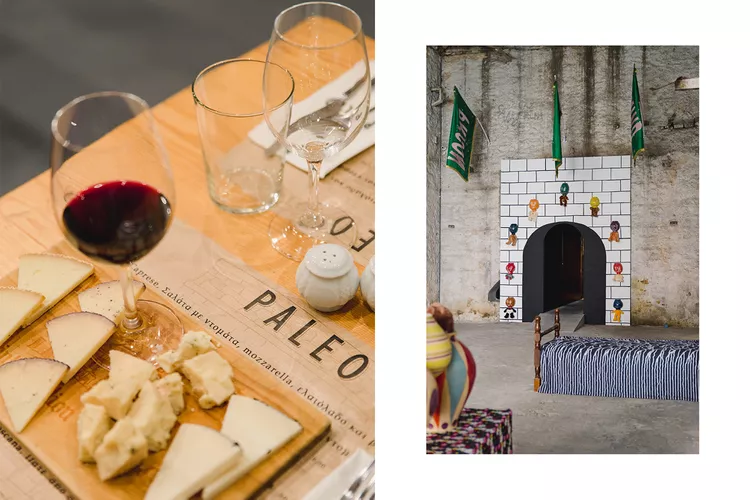
I alternated between shabby neighborhood hangouts like the Breeder and an opulent satellite of the prestigious gallery Lagosian, which relocated to an opulent estate in Kolonaki in 2020. Its light-filled parlors featured the Italian master Giuseppe Penne's creations, juxtaposing images of his young hands with sculptures formed from twisted branches that resemble old veins. Greek artists are displayed alongside international stars in the National Museum of Contemporary Art, which debuted in a massive new structure in the Koukaki area in 2020. I was drawn to conceptual artist Kendell Geers' piece titled Acropolis Redux (Director's Cut). The installation, whose title alludes to both an ancient fortress complex and Francis Ford Coppola's war epic, uses metal shelves to contain coils of barbed wire as a commentary on the perils and violence of modern life.
Neon, a magnificent art complex that opened in 2021 inside a former tobacco factory in Kolonos, a residential area in northwest Athens, was my favorite location. In keeping with its moniker, the enormous atrium's raw-stone walls were lit up with blue neon poetry. A politically charged passage from well-known Greek-Egyptian poet C.S. Lewis is presented in nine distinct interpretations in the piece Waiting for the Barbarians by American artist Glenn Lion. The same-titled masterpiece by P. Cavafy, published in 1904: "Now what are we going to do without the barbarians? The various versions encourage the viewer to consider the subtleties of language and how a phrase's meaning can vary from tongue to tongue. Those folks were somewhat of a solution.
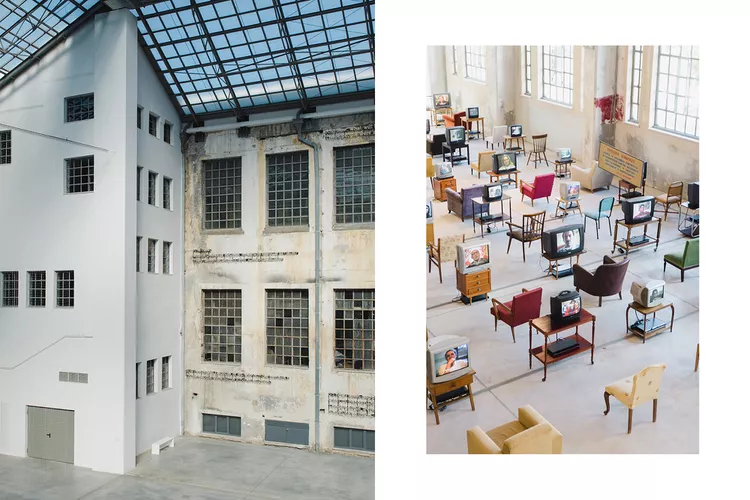
After concentrating on contemporary Athens for a week, I realized that I was missing the point as I gazed at the lighted poetry on the weathered walls. Cultural critics claimed not too long ago that the city was burdened by the memory of its glorious past and that it valued the classical ruins above everything else. Today, though, the city's charm is its seamless blending of centuries. Young Greeks are starting to create a unique cultural identity that draws from and develops upon ancient Greek tradition as well as the rest of their country's complicated history, such as the many decades of Turkish control and the war for independence in the 19th century. Even while the movement's full expression is still a ways ahead, it clearly exudes a fresh sense of vitality and confidence.
Some of the more recent architectural ruins in Athens have been transformed into social venues for theater after being neglected for a while. At T.A.F./the Art Foundation, a multidisciplinary space housed in a 19th-century Ottoman home that, in the early 1900s, became one of the last tenements for the neighborhood's gas workers and artisans, my artist friends from the Shila Hotel assisted me in creating a small self-guided tour. It is tucked away in a narrow alleyway between antique shops in the Monastiraki neighborhood. It has six modest rooms situated around a lush patio, as well as a gift shop where upcoming Greek jewelry makers sell their wares. Anna, a stunning café in the lofty, light-filled courtyard of a 1936 Art Deco building, is nearby. It has become a popular gathering place for stylish professionals and may very well serve the strongest espresso in Greece.
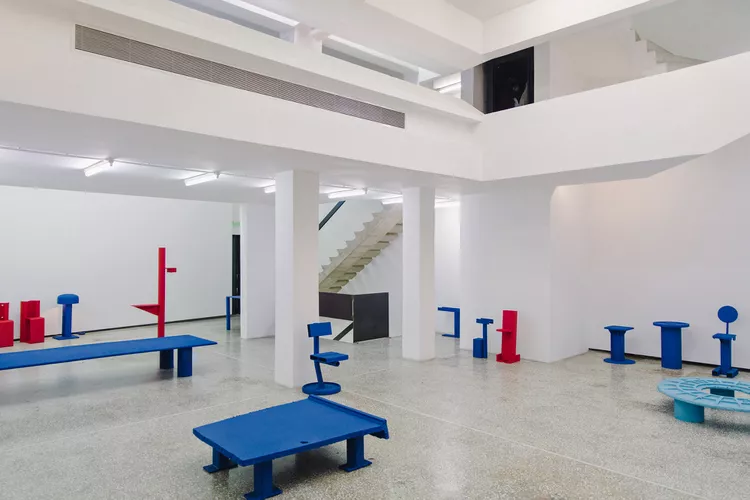
The discoveries got even more thrilling at midday when I found an unmarked double door close to the main vegetable market and entered Diporto (9 Sokratous; 30-21-0321-1463), the city's oldest and most obscure pub, by descending weathered stone steps. According to history, the underground location used to be a wine bar when Socrates lived there. Currently, the cellar-like area is crammed with wooden wine barrels and rickety tables grouped around a scorched metal stove, where battered tin pots of food are bubbling. The owner and chef, a white-haired man named Dimitris Kololios, served generous portions of grilled sardines, a bowl of yiouvetsi (orzo cooked with meat in a red sauce), a delicious Greek take on ratatouille, and Moscofilero wine. Then he came down at my table and wrote "1959" on the paper tablecloth. He said that this was the year he started working at the restaurant as a waiter until eventually taking it over some 20 years ago.
I went to Café Avissinia that night in search of the pinnacle of intergenerational entertainment. Athenians of all ages were drunkenly singing melancholy rebetika to an accordion player and occasionally standing up to dance in this beloved institution, tucked away down another winding back alley. The Shyla's Stefani, who had joined me for dinner, characterized this music by saying, "Think of it as the Greek blues." She translated lyrics from the song ("Even if my heart really yearns for it, I will never love again") and demonstrated zeibekiko, a slow stride done with the head lowered and arms extended, to help me understand how charmolypi, the Greek concept of "happy-sad," works. By midnight, her suggestion appeared to be working perfectly. "My father always said, just pretend you have dropped your keys and are looking for them on the floor."
The following evening, I went to the Stavros Niarchos Foundation Cultural Center to see a performance of Marina Abramov's experimental opera 7 Deaths of Maria Callas. This complex of white buildings towers over the nearby gardens and fountains with pharaonic beauty. A large crowd of affluent Athenians laughed and cried as they witnessed the opulent life and passing of the legendary Greek diva in the stunning music theater created by Renzo Piano.
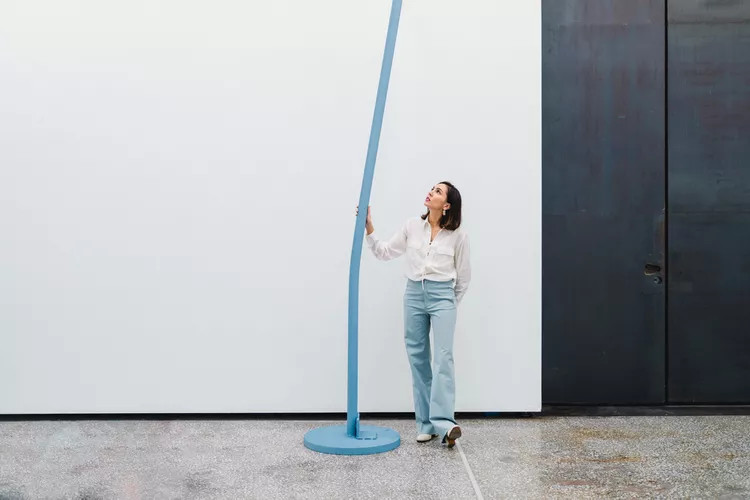
When I took a 15-minute taxi ride to Piraeus, the seedy port area, on my final night, the historical threads came together the most easily. This was where the ancient Athenian navy was established and based in the fifth century B.C., establishing a maritime empire during the heyday of the politician Pericles. As the eastern Mediterranean's shipping hub in contemporary times, it is now, according to Stefani, one of Europe's most unusual centers for the arts.
I cautiously got out of my cab on Polidefkous, a side street that was lined with factories and dingy hardware stores that sold propellers and boat parts. I swiftly located the three brand-new galleries that have elevated Athenians' obsession with abandoned workplaces to new heights. They are all located in refurbished stone warehouses that tower like industrial cathedrals. The eldest of the three, Rodeo, which opened in 2018, is where I started. The gallery's director, Sylvia Kouvali, was showcasing the latest additions to a group of British collectors, including a sculpture of a spectral silver bush that was concealed behind an obnoxious electric garage door.
Greek artists are increasingly engaging in broader global discussion, she claimed. Even so, the old cultural link with the Middle East felt real in Piraeus, "they move between MoMA in New York, the Venice Biennale, and the Musée d'Orsay in Paris." While the proprietor of the Carwan Gallery next door had operated a trailblazing contemporary design gallery in Beirut, Kavala claimed she had returned to Athens after operating a gallery in Istanbul.
The most crucial item to pack for a gallery visit in the Greek capital is a strong appetite. The Paleo Wine Store, whose adjacent warehouse had been taken over by Cardan, was setting up wooden tables on the pavement with its towering, deadly serious owner Giannis Kaimenakis. Once more, I had the impression that I was at a wedding reception as I chatted with the groups that had quickly gathered at the nearby tables and sat down to a meal of oven-roasted grouper and risotto while selecting from among three dozen fine bottles of wine from some of the oldest vineyards in the Mediterranean, all of which were open and ready to be enjoyed. The perfect combination of modern cuisine in a historical setting, a friendly local clientele, and tasty drinks.
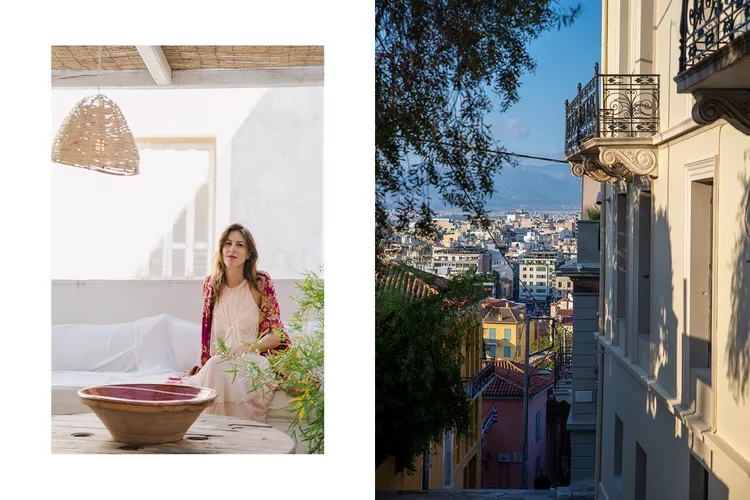
However, I came to the realization that the ancient Greeks would not have been at all shocked to see this contemporary version of their beloved Athens. After all, 2,500 years ago, the gourmandizing philosopher Epicurus coined the phrase "Pleasure is the first good," which is a fitting description of the city today. It marks the start of every decision and every aversion.

